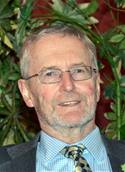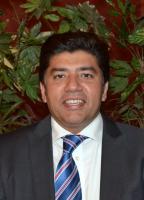Speaker Ken Senior - Soil Mechanics and Geology
Wed, Oct 31st 2018 at 6:30 pm - 9:00 pm
Ken spoke about his time as a civil engineer dealing with surveying prospective building sites. ---------- Speaker Finder Peter Meredith, Visitors Host, Grace and Banners David Burrows, Cash Desk Robert Allan
Ken explained that he joined Holst & Co as a junior engineer. They specialised in building large structures out of reinforced concrete such as cooling towers and bridges. Ken joined what was then a small section of the group dealing with soil mechanics and geology. But this small division grew to be the largest geo-technical engineering contractor in the country.
Ken's job involved among other things checking the soil conditions below proposed major construction projects to ensure that they were to be built on sound foundations. If there were weaknesses, then proposals had to be made to strengthen the sub-strata so that it would properly support the structure.
He said that soil mechanics is the study of the sub soils (clay, sand and gravels) which overlay the rocks. He explained that roughly from the south east of England to north west the structure is clay (being drift deposits) overlaying carboniferous rocks (limestone and coal). 300 million years ago, when the UK land mass was down at the equator, coal measures were laid down in swamps and limestone was created from oceanic crustacean deposits.
Geological maps first started in modern Britain in 1815 by a Mr Smith and by 1835 the whole of the country had been surveyed. But geological mapping started much earlier. The Egyptians were mapping gold and certain other mineral deposits in 1100BC and the Romans had been very good at surveying for coal and minerals. Furthermore, it is known that the Chinese were extracting coal as long ago as 3000BC so they must have had some knowledge of geology.
 Contact Peter Meredith about this page:
Contact Peter Meredith about this page:
'What We Do' Main Pages:
This committee is responsible for finding new members and retaining existing members.
moreThis committee deals with all local projects in our community.
moreComing under Community this part of the group exists to undertake environmental projects on behalf of the club.
moreThis committee deals with international projects and disaster relief work.
moreThis committee provides the link with Rotary Internationals main charitable trust which primarily deals with projects having a global nature.
moreRotary is not just about doing good deeds but also about enjoying yourself and this committee organises social activities. This page contains an archive of some of our activities.
moreThis committee works with the other committees to help them raise funds for their individual projects to support charities locally, nationally and internationally.
moreThis is the vehicle that donates the money that we have raised to the various good causes that we support. Its official name is The Rotary Club Of Bradford Blaize Trust Fund and its registered number with the Charity Commission is 514621.
moreThis committee organises social events and deals with the day to day running of the club.
moreThis committee exists to provide PR and communications between the members and also to provide links to non members through the web site and Facebook.
more